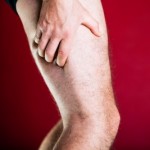 What’s Causing Your Leg Pain?
What’s Causing Your Leg Pain?
Many patients seek out my treatment practice because they are experiencing pain down the back of their leg(s). Their first question for me is, “Why?” and their second is, “What can be done to get rid of it?”
In response, I have a few questions of my own that need answering:
- When does your leg pain occur? (Sitting, standing, walking, etc.)
- What, if anything, relieves or eases the pain? (Sitting, lying down, etc.)
- Is there a daily pain pattern? (i.e. worse in the morning, better midday, worse again in the evening.)
There are four common reasons why pain might travel down the back of the thigh and/or lower leg. My patients’ answers to the above questions are critical in assisting me to hone in on a proper diagnosis.
Now before we discuss this topic further, allow me to clarify a term here. The word “sciatica” is often used to describe any pain that runs down the leg. This is not accurate.
True sciatica is caused by mechanical compression of the sciatic nerve by a particular muscle in the buttock region, the piriformis. This usually has an underlying sacroiliac joint dysfunction associated with it.
Radiating leg pain can also be the result of either a bulging or herniated lumbar intervertebral disc. Disc pain typically follows the daily pattern of being worse in the morning and evening, and better during midday. Additionally, the pain is increased (or onset) by prolonged sitting and forward bending.
A third cause of lower leg pain is intermittent claudication, a problem of compromised circulation in the legs. Its telltale presentation is leg pain which develops after walking awhile. It continues to intensify the further one walks, but is eased/eliminated almost immediately upon sitting or bending forward at the waist.
Finally, the structural narrowing of the spinal canal(s) through which your spinal cord and/or spinal nerves run (central or lateral stenosis, respectively) is another reason why you may be experiencing radiating pain down your leg(s). Osteoarthritis often plays a role here.
As with intermittent claudication, stenotic pain is brought on by prolonged standing and walking because those postures narrow the channels through which the nerves run causing pain-producing compression. But unlike the circulatory problem of intermittent claudication, someone with stenosis can bike for long periods of time without leg symptoms because of its seated (bent at the waist) position. This is a clever way to tell these two guys apart!
As you may suspect, the treatment approach for each of these conditions varies. So if you or someone you care about is experiencing radiating pain down their leg(s), see your doctor, pronto, and then, if warranted, begin manual physical therapy with someone who has a pair of healing hands!